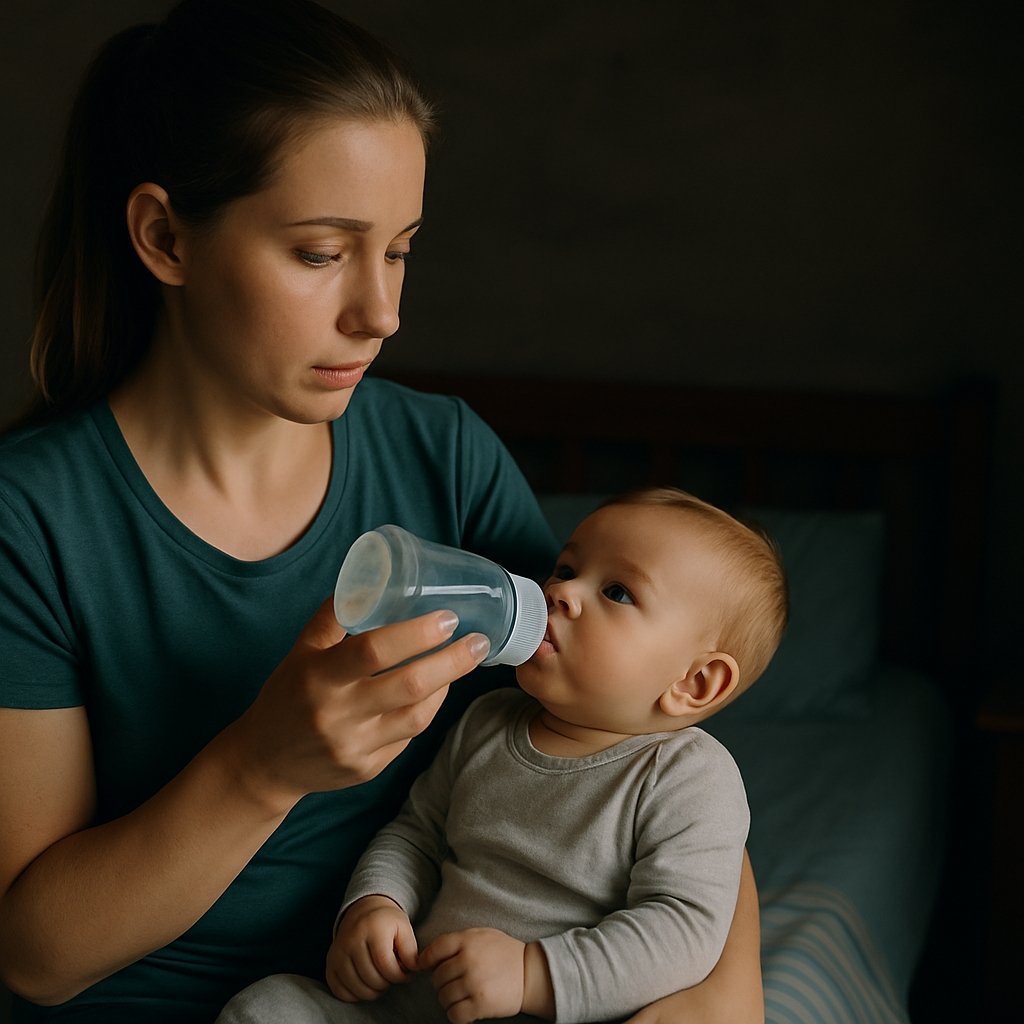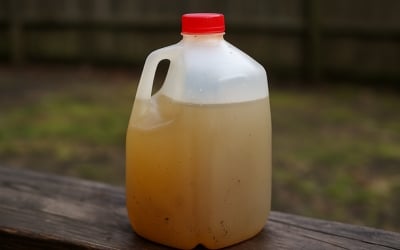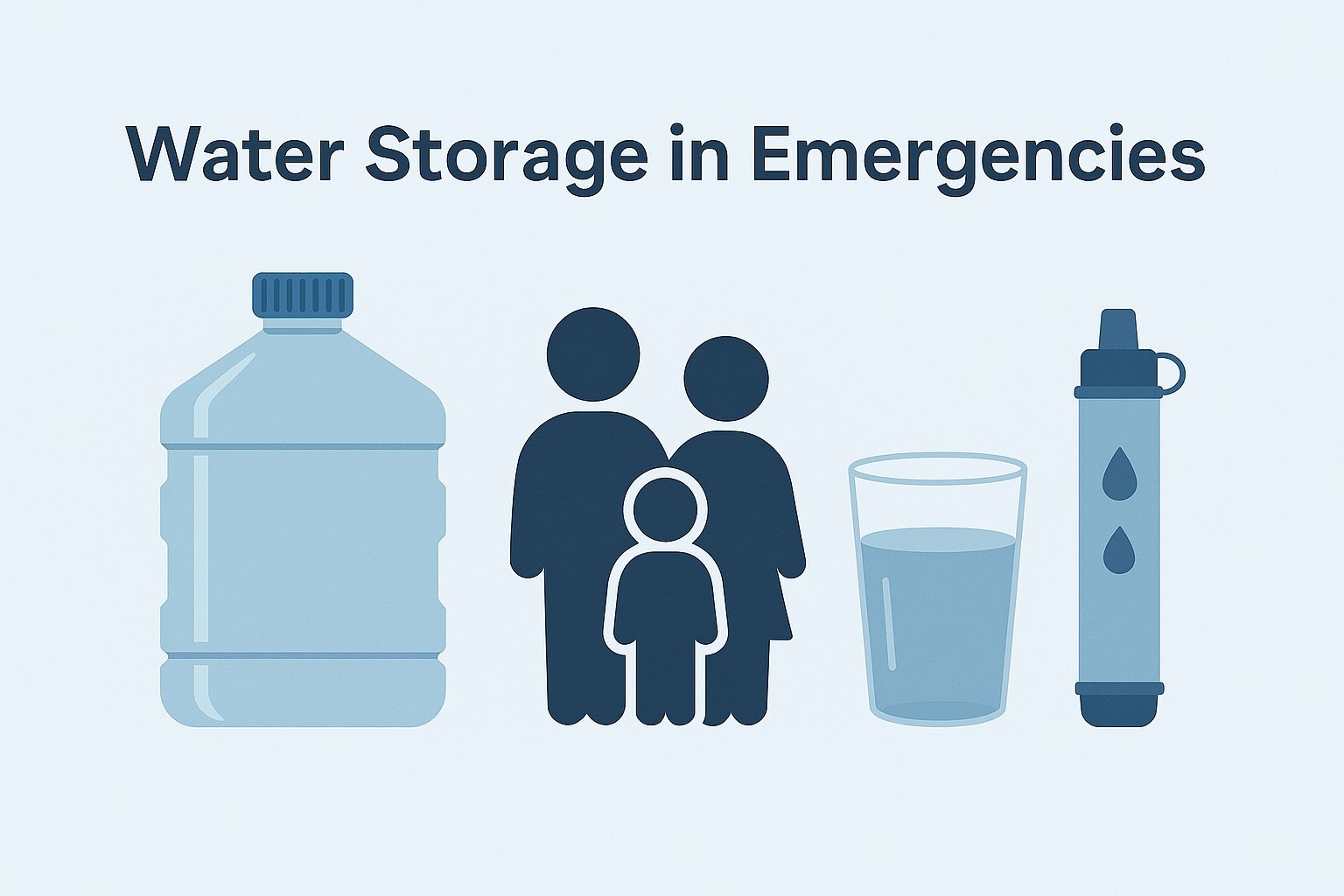Emergency Preparedness Water
When disaster strikes, clean water often becomes one of the first things to disappear. Whether it’s due to broken pipes, contaminated supplies, or limited access, not having water can turn a bad situation into a life-threatening one. That’s why emergency preparedness water should be at the core of every household plan. It’s not just about having water on hand — it’s about ensuring that supply is clean, sufficient, and strategically stored to last through the unexpected.
At Hope Force International, we’ve seen firsthand the challenges people face when water is cut off or unsafe to drink. That’s why we created the Water Usage Chart for Disaster Planning — a practical guide to help you calculate how much water your family needs and how to purify it if necessary.
This article introduces the key aspects of water preparedness. Each section links to a focused, in-depth article that breaks down the topic in detail.
Why Water Planning Matters
Imagine a week without water. Not just for drinking — but for cooking, brushing your teeth, making baby formula, or washing off smoke and debris. That’s not just uncomfortable — it’s dangerous.
Disasters often cause:
- Contaminated or disrupted public water systems
- Closed stores and limited supply deliveries
- Power outages that stop water pumps
That’s why experts recommend planning for at least one gallon per person per day — and ideally three gallons if you want to account for sanitation, cooking, and cleaning.
Not sure how much you need? Use our Water Usage Chart to calculate based on your family size and number of days.

Storing Emergency Water Safely
Let’s clear something up: storing water isn’t just about filling up a few old bottles. It’s about making sure that water is clean, accessible, and safe when you need it.
The truth is, improperly stored water can become useless — or even dangerous — if not handled the right way. We’ve seen families prepare ahead of a storm, only to find their water supply foul-smelling, leaking, or growing mold when the time came to use it.
Proper storage means choosing the right container, placing it in the right location, and checking it periodically. It’s less about hoarding gallons and more about creating a trustworthy supply you can count on during the worst-case scenario.
Our full storage guide covers setup tips, container comparisons, and common mistakes to avoid.
➡️ Read How to Store Emergency Water the Right Way
How to Purify Water at Home
When your tap water becomes questionable, knowing how to purify it becomes vital.
A simple bleach solution can make water drinkable. But the amount you need depends on whether the water is cloudy or clear. If you get it wrong, it could make things worse.
Here’s a quick comparison to get you started:
| Amount of Water | Clear Water | Cloudy Water |
|---|---|---|
| 1 Quart | 2 drops | 4 drops |
| 1 Gallon | 8 drops | 16 drops |
| 5 Gallons | ½ tsp | 1 tsp |
Beyond bleach, there are other options: boiling for 5–10 minutes, using personal filters, or relying on UV-based systems. Each method has its strengths, and our guide walks you through when and how to use each one effectively.
➡️ Read Water Purification Methods You Can Use at Home
Water Needs for Children and Infants
A mother once told us how her emergency plan fell apart because she didn’t account for her baby’s needs. She had enough bottled water — or so she thought. But when the power went out and access to clean water was cut off, she realized she hadn’t prepared for everything that came with caring for an infant. She didn’t have enough safe water to mix formula, sterilize bottles, or clean the pacifier that inevitably hit the floor over and over again.
Young children, especially infants, are more vulnerable during emergencies. Their bodies dehydrate more quickly, making water not just a convenience but a critical factor in their health and survival. And unlike adults, they can’t adjust or communicate when something feels off — they rely completely on the plans we make for them.

In families with infants, water isn’t just about hydration. It’s about making sure there’s enough clean water for preparing bottles, rinsing out sippy cups, washing hands, cleaning surfaces, and supporting basic hygiene needs that become even more pressing when access to running water is gone. A plan that might suffice for a teenager or adult falls short when applied to a baby.
If you’re caring for children under five — particularly infants — your emergency water supply should reflect their needs in full. Planning ahead goes far beyond tossing a few extra water bottles into the pantry. It means thinking through the full picture of daily life with a small child and being ready to maintain that care, even in the middle of a crisis.
➡️ Read Emergency Water Needs for Children and Infants
Why a 7–14 Day Supply Is Essential
You’ve heard it before: “Have enough for three days.” But more and more disasters are proving that’s not enough. When it comes to emergency preparedness water, three days is just the starting point — not the standard. Real-world crises are showing us that families may be left waiting for help longer than anyone anticipated. A shortfall in water supply can quickly lead to dehydration, poor sanitation, and increased health risks. The more comprehensive your emergency water plan, the better equipped you’ll be to protect your loved ones and ride out the uncertainty.
Consider:
- After Hurricane Maria, water systems in Puerto Rico were offline for weeks.
- In Texas, a deep freeze knocked out utilities for nearly 10 days.
- In flood zones, contamination can linger long after the storm clears.
Planning for at least seven days gives your family a better chance to remain stable, even if help is delayed.
➡️ Read Why You Need a 7–14 Day Water Supply

Don’t Forget Your Pets In Your Emergency Preparedness Water Planning
Water isn’t just for the people in your home — your pets need it, too. And when they get stressed, they often drink more than usual. We’ve seen this firsthand during deployments. Animals react to crisis just like people do: their routines are disrupted, their instincts are heightened, and their physical needs increase. If your emergency water supply doesn’t account for them, you may find yourself making difficult choices.
A medium-sized dog may require a full gallon of water per day, especially during hot weather or periods of high stress. Cats typically need less, but they still depend on you to provide a clean, safe source — one that hasn’t been compromised by outdoor contaminants or shared with other animals. Relying on puddles or streams isn’t just unreliable; it’s risky. Even if the water looks clean, it could contain bacteria, parasites, or chemicals that can harm your pet.
Evacuation plans should include pet water tools like collapsible bowls or lightweight jugs you can carry with ease. And just like you rotate your own water storage, it’s worth checking on your pet supplies regularly — making sure containers are clean and seals are still intact.
➡️ Read Disaster Preparedness for Pet Owners: Water Edition
Recognizing and Avoiding Contaminated Water
Even clear water can carry hidden threats. During disaster response, we’ve encountered families who got sick because they used water they assumed was safe.
Look out for:
- Changes in smell or taste
- Sudden cloudiness or particles
- Boil advisories or “do not drink” warnings from local officials
We’ll teach you how to spot the danger signs and what to do next.
➡️ Read The Hidden Dangers of Contaminated Water After a Storm

Water Access During Different Types of Disasters
Different disasters impact water access in different ways, and understanding those differences can help you tailor your water preparedness plan to the risks most relevant to your region.
Wildfires often lead to ash, smoke, and soot contaminating open water sources, especially if you rely on catchment systems or store containers outdoors. Even indoor water storage can be compromised if the air quality drops significantly. Floods, on the other hand, bring a dangerous mix of sewage, chemicals, and runoff that can seep into municipal systems or private wells. The water may look clear, but it can carry invisible threats that cause serious illness.
Winter storms frequently cause pipes to freeze and burst, leading to sudden water loss or flooding inside the home. If your home depends on a well pump, a power outage may cut off your supply altogether. Hurricanes typically knock out infrastructure — flooding water treatment facilities, disrupting deliveries, and leaving entire communities without access for days or even weeks.
And while tornadoes may not seem like a direct threat to water, they often damage local infrastructure in devastating ways. Water towers, treatment plants, and neighborhood lines are vulnerable to high winds and flying debris. Even if your home is intact, the system feeding your faucet might not be. We’ve seen towns hit by tornadoes where clean water was unavailable for days simply because the power grid — and with it, the pumps and purifiers — was offline.
Knowing what to expect and how each type of disaster affects water access helps you build a smarter, more complete plan.
➡️ Read How to Prepare for Water Shortages During Natural Disasters

Planning for Larger Households
If you’ve got five or more people in your household, your storage needs grow fast — and so does the complexity of your plan. Emergency preparedness water planning becomes even more critical when you’re accounting for multiple family members with different needs. You’re not just storing for drinking — you’re thinking about sanitation, cooking, and potential medical requirements, too. The volume adds up quickly, and without a solid system in place, even the most well-intentioned plans can fall apart under pressure.
What works:
- Multiple water storage points around the house
- Creating a rotation schedule with reminders
- Grouping personal-use containers by individual
We’ll show you how to manage the scale without losing your mind.
➡️ Read Water Planning for Large Families: What You Need to Know
Tips for Families with Special Needs Children
Families navigating medical or developmental needs can’t afford to run out of water — it may be needed for medications, hygiene, or sensory regulation.
In this spoke, we highlight:
- Questions to ask your care team now
- How to store water safely for medical devices
- Building calm routines during stressful outages
➡️ Read Emergency Water Tips for Families with Special Needs Children

What to Pack in a Water-Ready Go Bag
You can’t bring 20 gallons in an evacuation — but you can bring smart tools. The key is to pack lightweight, multi-use items that can help you access and purify water while on the move. Here’s a simple comparison of go-bag water tools and their functions:
| Item | Purpose |
| Collapsible water pouches | Lightweight containers that save space in your bag |
| Purification tablets | Disinfect water quickly with minimal weight or bulk |
| Portable straw filters | Allow you to drink directly from questionable sources |
| Stainless steel bottle | Can be used to boil water over a fire for safe drinking |
We walk you through what to pack and how to use each of these tools effectively.
➡️ Read What Emergency Water Supplies Should Go in Your Go Bag?
You Can Help Families in Crisis
Water is life. In a disaster, an emergency preparedness water plan often is the difference between chaos and calm.
Hope Force International equips reservists to respond quickly when families lose access to this basic need. Our teams bring clean water, safe storage solutions, and hope to disaster survivors around the world.
You can be part of that story. Whether you decide to get trained as a Hope Force Reservist, or make a donation to help others in need, your action makes a real impact.
Donate today to help disaster survivors — Your generosity provides life-saving resources when and where they’re needed most.
Your preparedness could save your family. Your generosity could save someone else’s.



